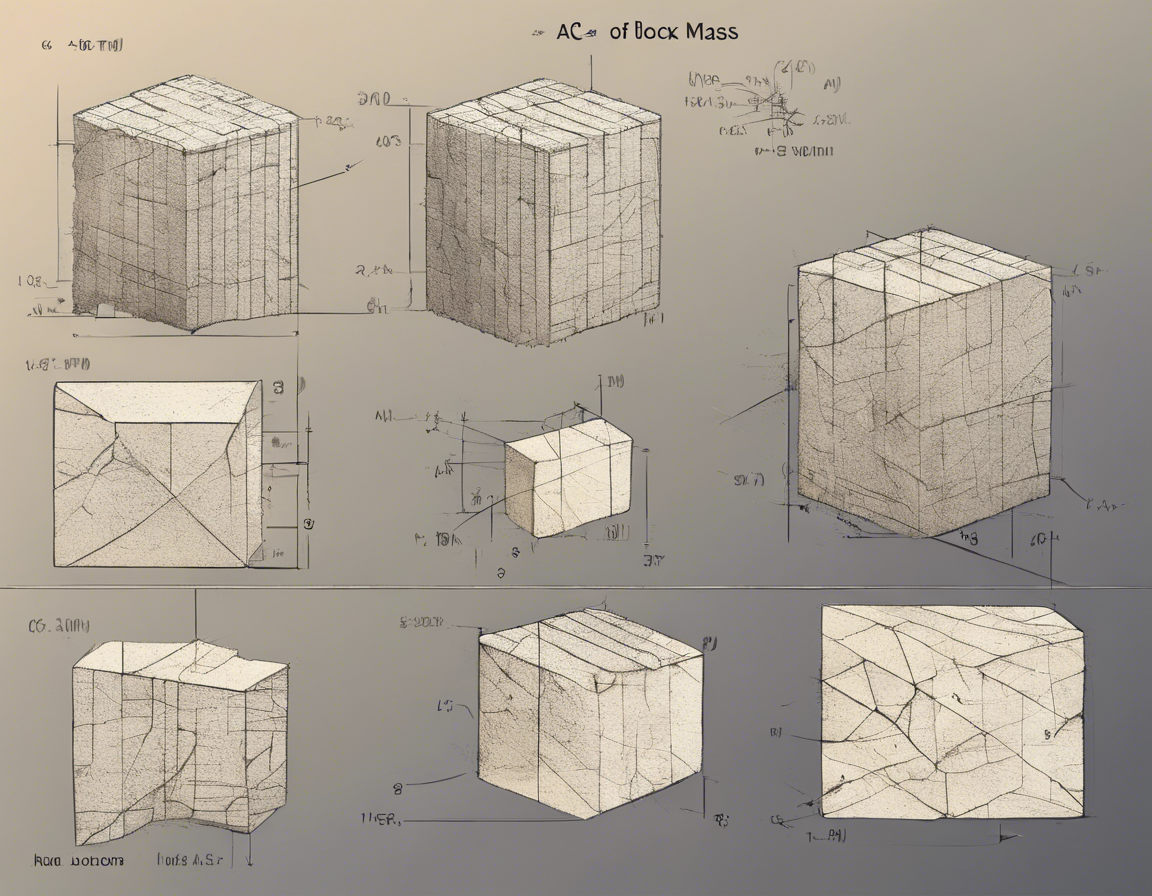Introduction
When it comes to studying physics, one fundamental concept that often comes into play is the understanding of mass. Mass is a property of matter which measures its resistance to acceleration when a force is applied. In this article, we will delve into the physics of a block of mass M. Understanding the behavior and dynamics of a block of mass M is essential in various fields of science and engineering, from mechanics to thermodynamics. Let’s break down the key aspects of a block of mass M and explore the principles that govern its motion and interactions.
Mass and Inertia
The mass of an object, denoted by M, is a measure of the amount of matter it contains. In the context of a block of mass M, this parameter plays a significant role in determining the block’s inertia. Inertia refers to the tendency of an object to resist changes in its state of motion. For a block of mass M, the greater the mass, the greater the inertia, meaning it will be more difficult to accelerate or decelerate the block compared to a lighter object.
Force and Acceleration
According to Newton’s second law of motion, the acceleration of an object is directly proportional to the net force acting on it and inversely proportional to its mass. This relationship is expressed by the equation F = ma, where F represents the net force applied to the block, m is the mass of the block, and a is the resulting acceleration. Therefore, for a block of mass M, applying a force will result in an acceleration that is dependent on the magnitude of the force and the mass of the block.
Friction and Surface Interactions
When a block of mass M rests on a surface, the interaction between the block and the surface can give rise to friction. Friction is a force that opposes the motion of an object and is influenced by factors such as the nature of the surfaces in contact and the normal force acting between them. In the case of a block of mass M sliding on a surface, the frictional force can be calculated using the equation f = μN, where f is the frictional force, μ is the coefficient of friction, and N is the normal force acting on the block.
Gravity and Weight
The weight of an object is the force exerted on it due to gravity. In the case of a block of mass M, the weight of the block is given by the equation W = Mg, where W is the weight, M is the mass of the block, and g is the acceleration due to gravity. The weight of the block acts vertically downward, and it influences the normal force between the block and the surface it rests upon.
Energy and Work
When a force is applied to a block of mass M, work is done on the block, resulting in a transfer of energy. The work done on the block can be calculated using the equation W = Fd cos θ, where W is the work done, F is the applied force, d is the displacement of the block, and θ is the angle between the force and the displacement vectors. Understanding the concept of work is crucial in analyzing the energy transformations that occur as a block of mass M moves or interacts with its environment.
Equilibrium and Stability
In the context of a block of mass M, equilibrium refers to a state where the net force and net torque acting on the block are zero. When a block is in equilibrium, it remains at rest or moves with a constant velocity. Understanding the conditions for equilibrium is essential in analyzing the stability of a block of mass M in different situations, whether it is at rest on a surface or undergoing rotational motion.
Frequently Asked Questions (FAQs)
- What is the difference between mass and weight?
-
Mass is a measure of the amount of matter in an object, while weight is the force exerted on an object due to gravity. Mass is constant, whereas weight can vary depending on the gravitational field.
-
How do you calculate the net force acting on a block of mass M?
-
The net force on a block of mass M can be calculated by considering the external forces acting on the block and using Newton’s second law, F = ma.
-
What role does friction play in the motion of a block of mass M?
-
Friction opposes the motion of a block of mass M and can influence its acceleration and velocity. The coefficient of friction between the block and the surface determines the magnitude of the frictional force.
-
How is the energy of a block of mass M affected when work is done on it?
-
When work is done on a block of mass M, its energy changes due to the transfer of energy through the application of forces. Work done can result in kinetic energy, potential energy, or other forms of energy depending on the situation.
-
What factors affect the stability of a block of mass M in equilibrium?
- The stability of a block of mass M in equilibrium is influenced by factors such as the distribution of mass, the presence of external forces, and the geometry of the system. A block is considered stable if it can return to its equilibrium position after a small disturbance.
Conclusion
In conclusion, exploring the physics of a block of mass M provides valuable insights into the fundamental principles of mechanics and dynamics. By understanding the concepts of mass, force, acceleration, friction, and equilibrium, we can analyze the behavior of a block of mass M in various scenarios and applications. Whether studying simple motion or complex interactions, the physics of a block of mass M serves as a cornerstone for scientific and engineering endeavors that require a deep understanding of matter and its properties.


